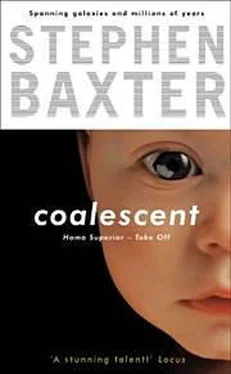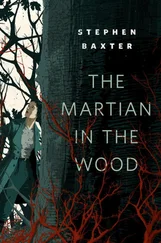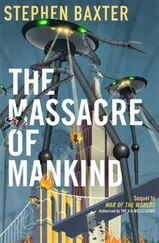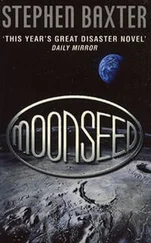The corridor curved out of sight. It was my first impression of the true size of the place. For sure it was a hell of a lot bigger than the anteroom.
And the corridor was full of people: a great murmuring crowd, deep underground.
There must have been hundreds, just in that first glimpse. The human traffic in that corridor was as dense as Oxford Circus on a summer Saturday, or Times Square at New Year. Most of them were women. Many were in street clothes, but some wore a kind of uniform, a simple white dress or trouser suit with sewn-in threads of purple. They walked in neat files, passing in and out of the rooms that branched off the corridor.
Then there was the smell : not an unpleasant smell, not a locker-room stink, but there was something animal in the air, something potent. The air was hot, humid, and noisy; I found myself breathing hard, dragging for breath.
All this concealed far underground, under that sleepy tourist-trap park.
Nobody seemed aware of anything strange, nobody but me. It was all I could do to keep from staggering back, into the relative calm of the anteroom.
Rosa was leaning toward me. “Don’t let it get to you. I know how you feel. But it’s always like this here. Come on …” Holding my hand, she pulled me forward, and we waded into the streams of people.
Suddenly I was surrounded by faces, all young, many smiling, few showing curiosity at this big sweating Englishman who had been thrust in among them. They all seemed to be talking, and the hubbub battered me, like a wind. But they parted around us, accepted us into the flow.
We passed offices with desks and partitioned cubicles, potted plants and coffee machines. They all seemed very mundane, if crowded and noisy compared to most offices I’d seen, almost as crowded as the corridors. In some places there were copies of the kissing-fish infinity symbol of the Order, done out in chrome strips and fixed to marble walls. All very corporate.
On many of the walls slogans had been incised — in places crudely, by hand, and in others more professionally. They were in Latin, which I can’t read. I tried to memorize them, meaning to ask Peter about them later; there seemed to be three key phrases.
Rosa said that the varying sizes of rooms had names, in the Order’s peculiar internal language — basically modern Italian, I would learn, but laced with terms derived from Latin, and other sources I didn’t recognize. The room names seemed to be a macabre joke, a remembrance of the Crypt’s origin. The largest vaults of all were called cubicula , like the family tombs in the Catacombs, the next largest arcosolia , like the large tombs of the wealthy and the popes — and the smallest of all loculi , like the lonely niche-graves of the poor.
But there were few loculi , I would learn, because members of the Order were never alone: the bigger the room, the bigger the crowd, the better.
The deeper in we penetrated, the more powerful that animal smell became. It was like walking into a lion’s cage.
I tried to keep a clear head. “The workers here seem young,” I said. “Nobody much over twenty-five or thirty?”
“Actually, most people here are older than that.”
“They don’t look it …”
“There are some youngsters, of course. Everybody has to learn. But most of the Order’s younger members work downbelow.”
“Downbelow?”
“On the lower levels.”
“There are lower levels ?”
We passed through a domain of libraries. The books were densely packed, and, as you see in some academic archives, the shelf units ran on rails: in a whole room there would be only enough space for a single passageway between a pair of shelves, and you would have to turn a little handle to make the shelves roll back and forth until you got the access you wanted. There was a lot of material. Farther on there were rooms more like museum departments, which contained what looked like extremely ancient manuscripts, scrolls and clay tablets, all held in air-conditioned isolation and low light, many of them in the drawers of glass-topped cabinets.
This area was the scrinium , said Rosa, the Order’s term for the monumental internal record center that had now been turned outward to fuel the Internet genealogy business. Rosa showed me cabinets full of somewhat dog-eared index cards. There was so much material, she said, that even the indices had an index. We passed a computer center, where great mainframes hummed behind sealed windows. I got a fresh sense of the power and wealth of this place.
Before we left the scrinium Rosa gave me a small hardback book. It turned out to be the story of Regina, our Roman British ancestress — “A more complete biography than of anyone else in the ancient world, even the Caesars,” Rosa said. “Bedtime reading.”
A little farther on, to my surprise, we came to classrooms, where children, mostly girls, sat in neat rows, or worked in groups at desks, or labored over baffling-looking experiments in a science.
Rosa told me that few of these pupils belonged to the Order. Offering quality education to outsiders had been the Order’s earliest significant money earner — earliest in the Order’s terms, I learned, meaning ‘fifth century after Christ.’ She said they even had accounting records that went back that far, though the earliest entries were of limited use: they predated the invention of the double-entry bookkeeping system by the best part of a millennium.
“How inconvenient,” I murmured.
In one place there was even a small theater, where a group of young teenagers was rehearsing a play.
Schools. A theater. A play . And all of this, remember, dug deep into the ground below four levels of Catacombs.
Again we walked on.
* * *
In that first visit I didn’t even come close to figuring out the geography of the Crypt. The place isn’t designed to give you long vistas and perspectives anyhow; it’s designed to disorient, to make you forget where you are.
I would discover later that the Crypt was organized on three great levels. But each of those levels was subdivided by intermediate floors and mezzanines. The layout was functional, and changed all the time according to need, the arbitrary divisions between compartments blurring. All that helped mix up the geography in everybody’s heads, of course. I certainly didn’t figure out, that first time, how far those branching corridors and mushrooming chambers led; I never came to anything that could have been an outside wall, a layer of tufa like that I had seen carved out in the Catacombs above. Even so, I could see that the Crypt was immense.
And it was full of people. That was the one thing that struck me every second.
They were all around me, all the time, everywhere we walked. They all seemed similar, all smooth-faced and ageless, all of a compact, rounded build — and not tall; I was one of the tallest there, so I was seeing over the heads of the crowd. I was immersed in touch constantly: they would brush against me, and sometimes one would rest a hand on my shoulder as she squeezed past. There was that smell, the overall leonine stink of the compound, but something subtler when one of them came close, the milky sweetness I had noticed about Rosa.
And then there were the faces. It took me some minutes, after entering that first corridor, to recognize how similar they all were. They were all like Rosa, and therefore like me, almost all of them with oval faces, broad, flat noses — and the slate-gray eyes that have been a family trait for generations. They were all around me, faces like mirrors of mine — if younger, smoother, happier . There was a constant racket, but nobody seemed to be shouting, arguing, barging past anybody else; everybody was busy, but nobody was rushing or stressed out. Despite the hubbub, there was a great sense of order about the place.
Читать дальше












